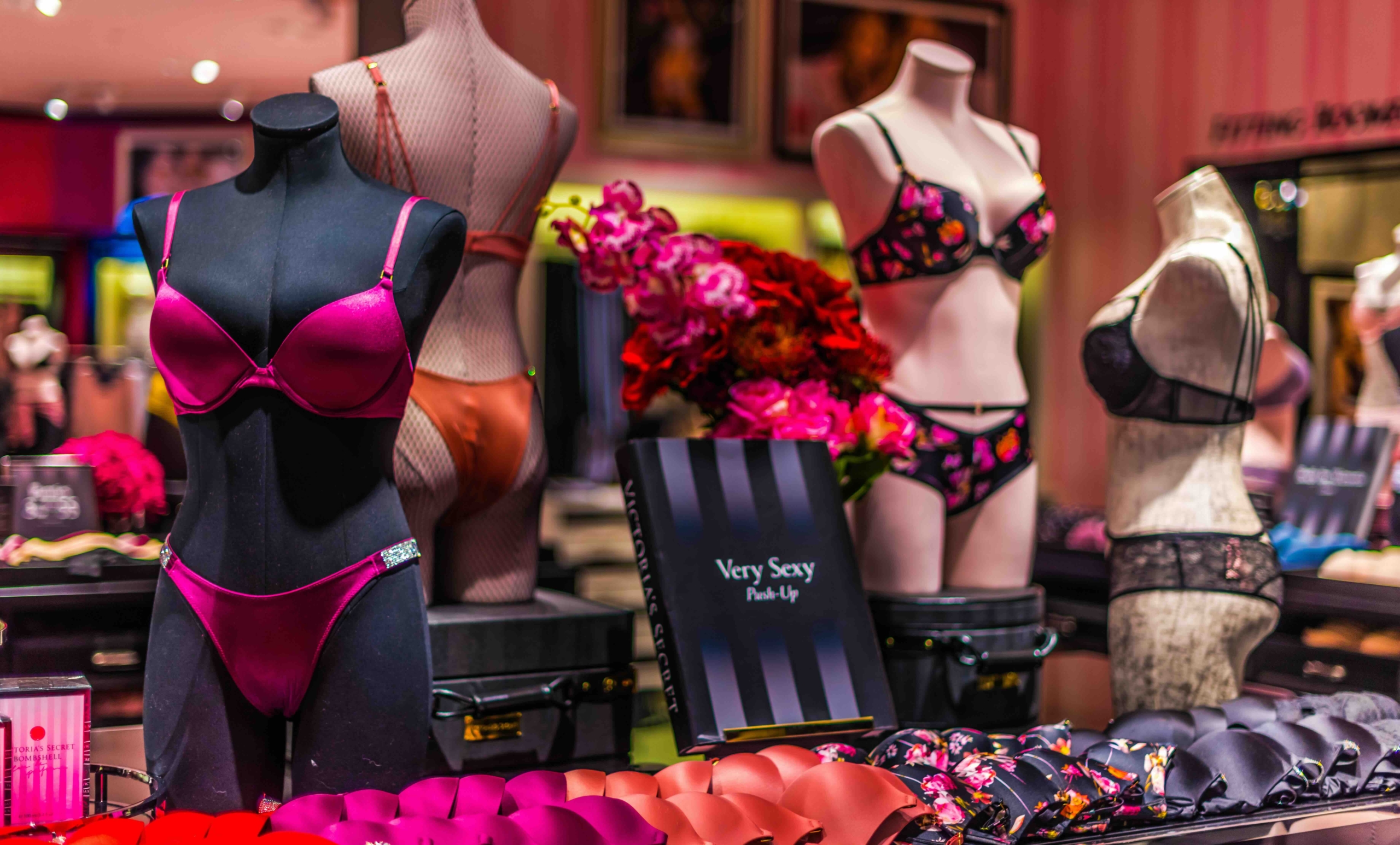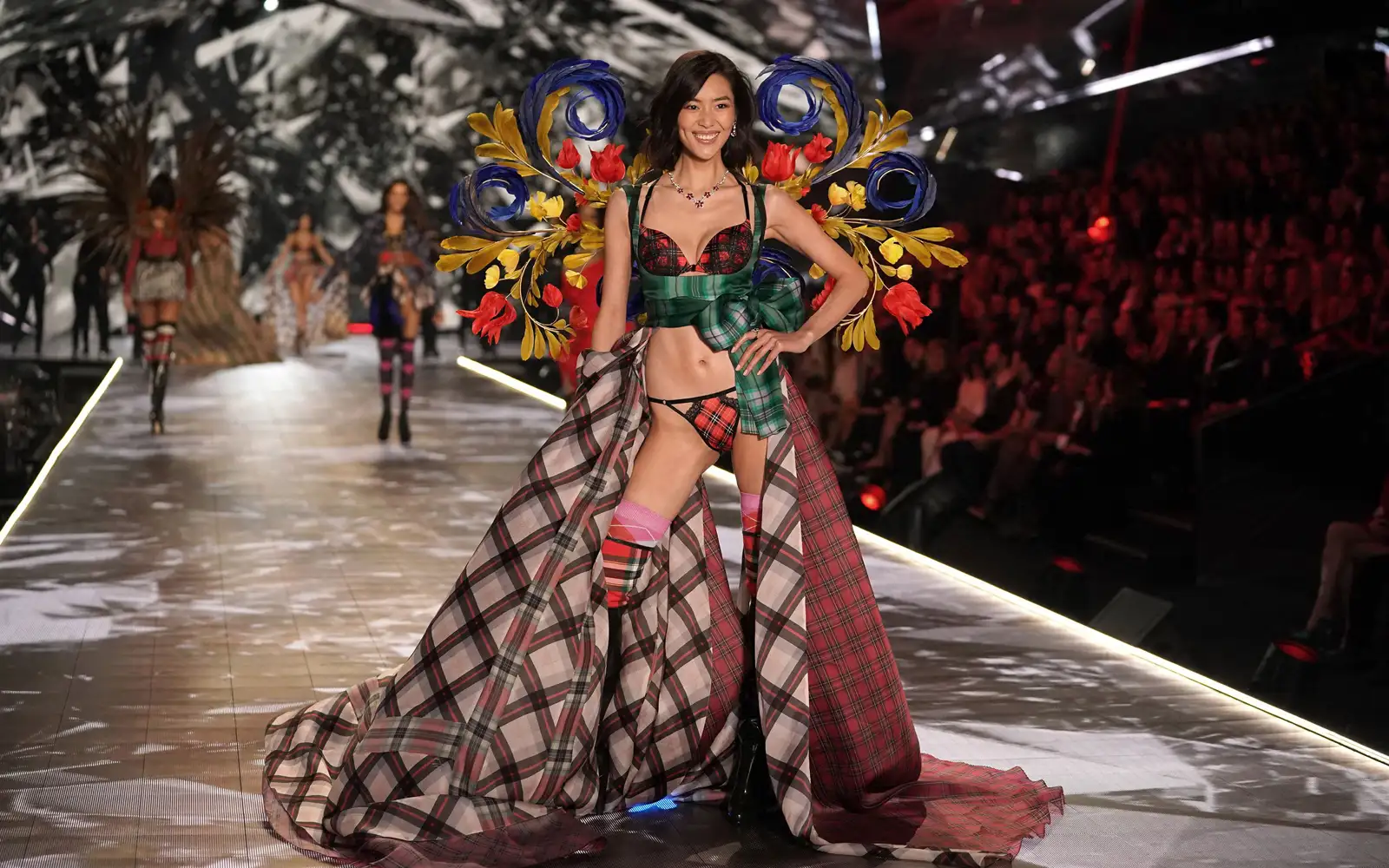“There are no paved roads here to follow. There is no road map.” (p. 151) This quote from Grace Nichols, the former chief executive of the Victoria’s Secret stores division, sums up the revelations shared by Lauren Sherman and Chantal Fernandez in Selling Sexy: Victoria’s Secret and the Unraveling of an American Icon. Sherman, the chief fashion correspondent at Puck, has been reporting on fashion for over fifteen years, and Fernandez is a features writer for The Cut at New York Magazine. Through the authors’ thorough brand research, Selling Sexy reveals the interplay between gut instinct and business acumen in decision-making for what would become a billion-dollar retail behemoth.
In the book’s introduction, readers are given a concise, fact-filled overview that manages to honour the allure and fantasy alongside the lingerie brand’s dark underbelly. Sherman and Fernandez chose to introduce Victoria’s Secret through the ecstatic moment when model Gigi Hadid was offered entry onto the Angel’s runway and given her “wings.” It was 2015, and “Victoria’s Secret had become the MGM Studios of American retail.” (p. 2) Hadid’s enrapture in the fantasy is followed by the sobering reality of the company, and this echoes the experience of its consumers—generations of women enthralled by its promise and awakened to its corruption. The brand’s allure vanished as the company’s success came to a halt during the late 2010s.

Alongside the Hadid story, we are introduced to Leslie “Les” Wexner, the founder of a global retail empire for five decades, which included The Limited, Abercrombie & Fitch, Bath & Body Works, and Victoria’s Secret, amongst others. Collectively, these were known as L Brands.
Sherman and Fernandez highlight tension in the business through the juxtaposition of two key figures in its history. One of these is Roy Raymond, who created the concept of Victoria’s Secret in Palo Alto in 1977. Raymond’s lack of business acumen and financial impulsivity provides contrast to Wexner’s intuitive reliance on financial strategy. Wexner’s purchase of Victoria’s Secret from Raymond was followed by its meteoric rise.
Selling Sexy is filled with meticulous details and deep research, which serve as a vehicle for education throughout the book. For example, the authors detail how incomparable Wexner’s operations were to competing businesses at various peak points, including how he became “responsible for selling more women’s clothing than any other retailer in the world” by the 1980s. (p. 59) Annually, we learn that 200 million catalogues were distributed to 10 million people, generating $570 million in the 1990s. In transitioning from mall brand to high fashion, the brand secured a $5 million per year retainer with Gisele Bündchen in 2000, and many of the Angels started with a salary of $1.3 million in exchange for 48 days of work.
Astounding financial statistics continue, such as the time Victoria’s Secret surpassed $4 billion in sales, a figure representing the revenue generated by Wexner’s other brands combined in 2004. While statistics are crucial for the story, at times, the listing of such details highlights an obsession with research and possibly a slipping grasp on the book’s readers.

With subject matter centred around a specific brand within a niche industry, I wondered about the target audience for Selling Sexy. Chapter one reveals the ancient history of lingerie, tracing back to Italy, Greece, and Egypt, including the history of the corset. The American shopping mall becomes a focal point, as Wexner’s fashion brands relied upon its momentum through the 1980s and 1990s. The history of contemporary fashion is also a focus, specifically its influence on the evolution of lingerie. This is explored through the hourglass figure of Dior’s “New Look” and imagery of pin-up fashion. The padded bra trend of the 1990s, a crucial pivot point for Victoria’s Secret, was influenced by Lagerfeld’s designs for Chanel and Gaultier’s designs for Madonna.
Wexner’s story, reported by Sherman and Fernandez, is a tale of visual merchandising and creative direction. It’s a study in the psychology of sales, as Wexner “capitalized on a great American pastime: shopping for things we don’t need, but desperately want, at a sensible price.” (p. 3) Selling Sexy is for those interested in fashion history, the evolution of advertising, or an epic case study of one California-based business turned global enterprise.
Present-day controversial names litter the pages of the book, and the authors’ mention of them reflects the ethical schism between the eras: the heyday of Victoria’s Secret and its present rebirth. The brand’s early vision—created by Raymond, reimagined by Wexner, and shaped by various creative executives—focused on the desires of “Victoria,” who served as both a reflection of and aspiration for the customer. Women had been at the helm of much decision-making within Victoria’s Secret, and in its foundational decades, the collective vision wasn’t about sex; it was about inspiring women to feel good. Their “gender was [viewed as] an asset, not a liability.” (p. 5)
By the 2000s, this vision dissolved as the internet boom contributed to the proliferation of the porn industry, and lowbrow cultural contributions, like Girls Gone Wild, amplified a wider view of women as sex objects. “What it means to be sexy is to not feel pleasure, but to represent someone else’s pleasure,” shared Jill Filipovic, a writer on women’s rights at the time. (p. 144) The authors use examples to outline how standards at Victoria’s Secret buckled under the cultural shift of the 2000s. A new focus on sex appeal and the male gaze was exemplified through the runway show, the creation of the Angels, and advertising campaigns. Each of these was overseen by Ed Razek, who would become the chief marketing officer for L Brands and a controversial figure in the following decade.
Razek was not the brand’s only controversial figure. Wexner’s corporations drew attention from individuals like Mike Jeffries (who would become the Abercrombie & Fitch CEO) and Jeffrey Epstein (Wexner’s financial advisor for twenty years), both of whom would later be charged with sex trafficking. While Wexner denies any knowledge of or participation in these acts, he was quoted in the 1990s promoting size exclusivity, stating, “we don’t want to be for everybody.” Despite urging from female executives—whose advice he often relied on—he refused to make sizes larger than 36DD. As Sherman and Fernandez share, “today… the average size is thought to be around 34DD.” (p. 92)

As the authors note, “most fashion brands have a creative shelf life of ten to fifteen years before a stale smell wafts in, the hype fades, and shoppers move on to the next new thing.” And “it is remarkable that the brand’s allure lasted as long as it did.” (p. 6) As I continued through the early chapters, I found myself mesmerized—just as the authors seemed to be—learning how Wexner engineered this empire. As the authors share multiple times, Wexner embraced being a copycat and was an expert in pattern recognition. “Be a fast second,” he would tell his merchants in the 1970s and 1980s, as he observed global trends for various divisions within L Brands. (p. 40) He relied on his intuition but didn’t believe he had all the answers. He became a master in store design and visual merchandising, which “served him well for… four decades, even after malls started to lose their lustre.” (p. 51)
Before its unraveling and given the brand’s rise concurrent with expanding mall culture, he was lucky. He was supported by tax laws passed by Congress in the mid-20th century that designated shopping malls as “highly favorable tax shelters.” (p. 52) Whether through Raymond’s original proprietorship or Wexner’s lingerie chain, creative storytelling is the unsung hero of Victoria’s Secret.
Wexner’s strategy, outlined by Sherman and Fernandez, is a master class in pivoting with changing demands, times, and technology. But times and consumers have changed again. As a former Pink wearer, imagery of the stores came to mind throughout the book, though I had been clueless about the brand’s inner workings.
With the brand’s attempt at rebirth, will it survive the conscious consumer? Can it break free from its associations with sexual predators? Will it speak to a new generation who looks at garments—including fabrics and their production—through an intentional lens? Time will tell, but they’ll likely need to incorporate good storytelling alongside transparent, ethical practices in this decade.
 Catherine Gerdes is a Brooklyn-based writer and astrologer exploring art, culture and the intersections of cosmic patterns and contemporary life. She is the author of Astrology & Shadow Work, with words in Well + Good, Origin, Elite Daily and Bustle. She is a graduate student at The New School in Creative Publishing and Critical Journalism.
Catherine Gerdes is a Brooklyn-based writer and astrologer exploring art, culture and the intersections of cosmic patterns and contemporary life. She is the author of Astrology & Shadow Work, with words in Well + Good, Origin, Elite Daily and Bustle. She is a graduate student at The New School in Creative Publishing and Critical Journalism.

